It’s July. With the windows down, drive to the corner of Hudson Street and Netherwood Avenue. Pull into the driveway lined with Marigolds and with Morning Glories climbing the mailbox. You might miss the street sign, which is regularly hidden behind Sunflowers 10 feet high, but you can’t miss the strawberry patch nipping at their feet. Park the car and step outside. A warm breeze will caress your skin and tenderly play the percussion of wooden wind chimes. You will feel something special about this place, and the birds will confirm it; you’ll find dozens of them singing at the bird baths, waiting patiently for the bird feeder, made from plastic soda bottles, to be refilled with seeds. Say hello to them.
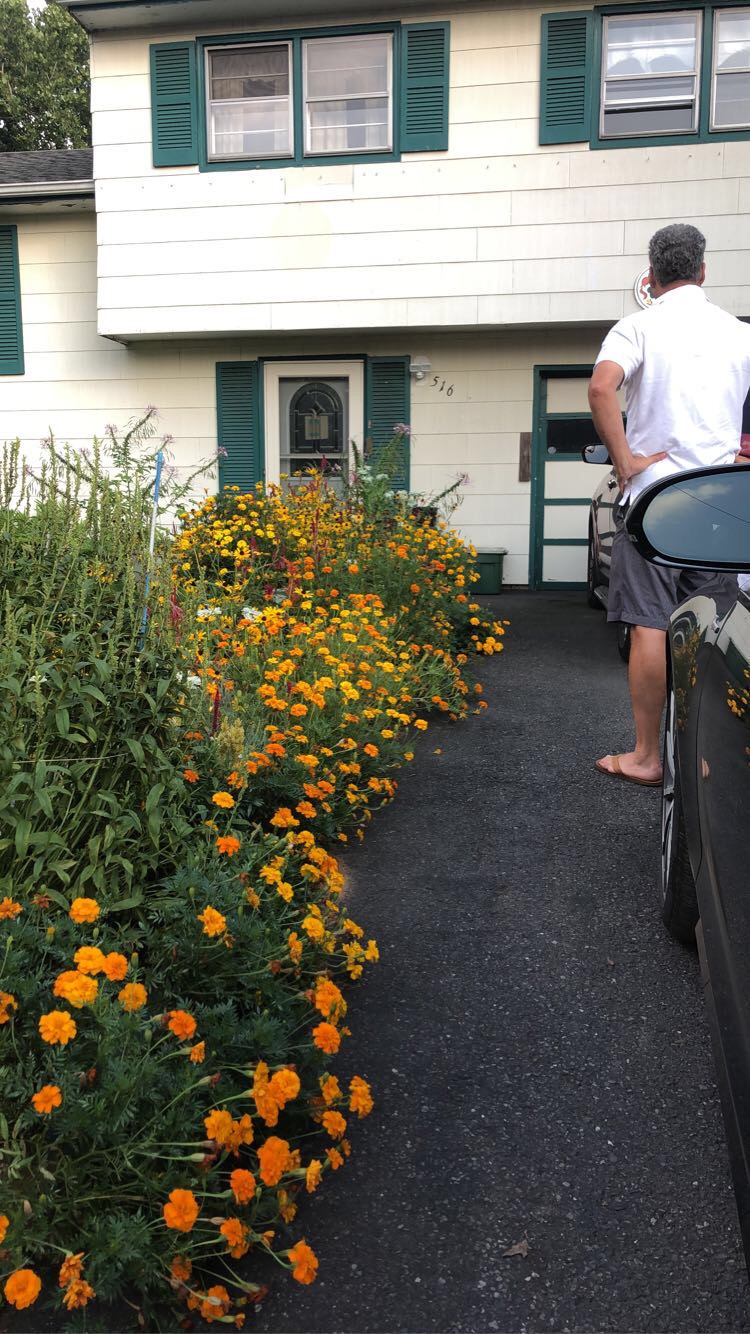
Gramps will come through the screen door in cracked bare feet and a sunhat. You can take your shoes off, too, if you’d like to feel the sweet grass on your ankles and the thick mud between your toes. He’ll hand you a Tupperware bowl with your name Sharpie-scribbled on the lid before wandering around the side of the house. Follow him.
He’ll lead you just around the corner to a blueberry bush. As you step closer, you’ll smell sugar and earth, a scent that conceals the stench of the trash cans and recycling bins overflowing against the house’s exterior. Gramps will gesture to your Tupperware and tell you that the birds will get to the blueberries first if you don’t hurry. Careful now; look out for critters as you gently pull a berry from a branch. Look closely. Each blueberry is a rounded, blue-purple shade of perfect and just about the size of a marble. Squeeze one between your thumb and your pointer finger and notice how little force is required for it to fall apart. Pop it into your mouth; feel the fruit drenching your tongue in tart juice instead of the expected sweet. A few steps further and you’ll find a pocket of sky-high beanstalks, heavy with foot-long beans that are more often purple than green. Munch on one and tug at another to add to your loot. Start thinking about creative ways to prepare them. Once Gramps knows you like them, he’ll bring you jumbo Ziploc bags of them all summer long. In your peripheral vision, you’ll catch the sight of a dilapidated statue of the Holy Mary standing lopsided next to a prayer bench covered half with soft moss, half with peeling paint. Be sure to thank the hands that prepared this food; this is how Nana used to conclude grace before every family dinner.
Continue into the backyard. To your left, find the tiny, concrete patio adorned with wooden picnic furniture painted terracotta red. You won’t be able to see the years of barbeque nights, rounds of Hearts, Scattergories, and Easter egg dyeing held around the sticky table-clothed table. The table is now covered with old prescription bottles that once held Gramps’s Alzheimer’s medication and Nana’s Parkinson’s pills. They are now filled with seeds and layered with new labels of wrinkled duct tape.
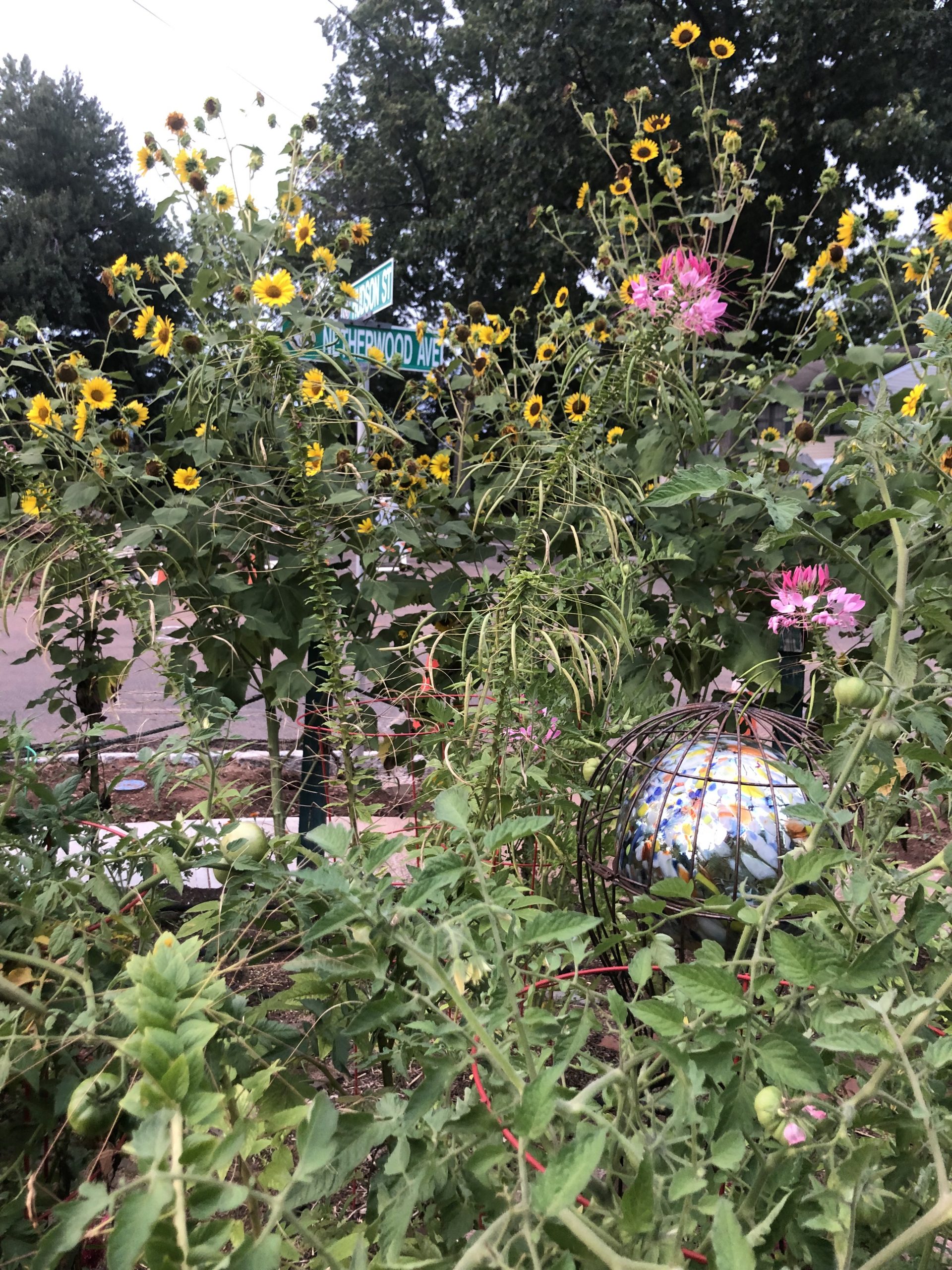
To your right, find Gramps’s three piles of compost – separated by jagged metal sheets and chunks of broken doors and fences – which he meticulously spins thrice annually. Here lies the secret behind his fertile soil. Watch as he scatters a handful of pumpkin seed-laden compost onto his yard; he will accidentally grow a sweeping pumpkin patch by fall.
Gramps is resourceful and imaginative. He finds new life for everything. Adjacent to the compost is Gramp’s shed, overflowing with odds and ends, crates, wires, tubs, twigs, tires, and tubes, all of which Gramps has saved to tend to his yard. Bags of human hair, collected from the local barber shop, rest against the shed, waiting to be poured out around the garden to deter the deer. Hanging on the outer wall of the shed are three wooden hooks labeled Kyle, Ashley, and Chelsea: places for his three grandchildren, now grown, to hang their little coats, grab a shovel, and learn alongside him.
Watch your head! Two taut clotheslines spread from Gramp’s shed to a tired post. He is hang drying his jeans, his underwear, and his single-use medical masks. During the 30 years of his marriage, Gramps was not allowed to touch the laundry, as Nana feared that he might tragically mix colors or disrupt her meticulous schedule. Sometimes, you pass by, see the lines, and forget she’s gone. But she’s dead, and he’s learned to tend to his own clothes in necessitated mimicry. Gramp’s wrinkled fingers pinch wooden clothespins one by one.
Continue on. Against the house, beauty and pain intersect; Gramp’s thorny pink roses and deep green ivies wrap higher and higher about his trellis each year. The once-was are made tangible in their old growth. As you greet the thick rows of carrots and jungle of tomatoes running the length of the backyard, notice an intermittent array of lime green tennis balls bobbing upon the poles delineating the contours of the garden. These are round relics of the fateful summer evening when my brother, playing hide and seek in the garden, pounded his knee into a rusty metal stake. After watching his grandson get eight stitches and a tetanus shot, Gramps decided to kid-proof his yard.
The back corner of the lot is where the old wooden swing lies. Look, don’t touch. The slats of the seat are battered and unsittable; the arms and its chains have pulled away from the wooden frame, leaving the entire structure laying sideways. It is broken. To a passerby like yourself, it might just look like a pile of junk. But Nana loved it.
Just beyond this swing and along the sidewalk, a cardboard sign balances on the curb. Read aloud the handwritten message: FREE! PLEASE TAKE! In this spot, Gramps gives away hundreds of seedlings – sunflowers, peppers, tomatoes, rose of Sharon – each summer to lucky friends, neighbors, and strangers. He once gave away one of Nana’s cherished diamond rings at this spot, which my family, to our heartbreak, only found out about later. Whatever it is that he gives away, it is here that Gramps shares the abundant melody of his garden and of his life, and invites everyone to sing along.
Welcome to Gramps’ garden.
The truth is, I love this messy, memoried landscape more than any place in the world.
. . .
I remember the time when Gramps’s garden received a citation from the city. He brought the letter over to our house, confused.
“I think it has something to do with my yard,” Gramps said, exasperated.
Over the past several years, the city has come to his doorstep several times with demands about his garden. Once, they asked that he trim back his prized sunflowers to improve traffic visibility; in another instance, they alerted him that they would be asserting eminent domain and carving into his property by 5 feet to install a sidewalk. To Gramps, this letter was just another nuisance in a long history of what he considers to be municipal clashes.
My mother spent hours on the phone with the city, trying to understand what, exactly, about her 80-year-old father’s yard seemed to be the problem this time. Their answer was simple: “Poor yard maintenance; exterior debris”. Gramps was to rectify the perceived failings within his responsibilities as a homeowner or head to court.
Poor yard maintenance? The great majority of Gramps’s time is spent tending to his yard. In fact, when the snowstorms and frigid temperatures typical of New Jersey winters keep Gramps out of his garden, he is overcome with restlessness and depression. During these cold months, my family and I relentlessly strategize to keep Gramps’s mind busy and to fixate his outlook on the April and May mornings to come. His Christmas list is usually quite simple: new sandals, new seeds, for spring. We know the pride he takes in his garden. Why does it have to look ‘good’ for everyone to know the ‘good’?
Without much of a choice, we spent the next month trying to align Gramps’s yard with what the city believed was more aesthetically pleasing. We organized the tools, bins, and crates surrounding his shed, and against Gramps’s protests, tossed out any of the particularly flimsy ones; we tried to work with Gramps to create a new system for storing seeds and seedlings; with heavy hearts, we helped him dispose of the deteriorated wooden swing. Through all of this, Gramps looked physically uneasy, as if we were rooting through his private belongings and erasing the memories upon which he relied.
That’s because we were.
Despite his progressing Alzheimer’s, Gramps spends hours out in his garden daily; his yard grounds him in a loving routine of care and growth, almost as if it were a radical denial of all that he has lost. Like sticky notes with appointment reminders stuck onto the refrigerator, Gramps’s garden is riddled with his own familiar cues to care. Feeling the temperature on his skin and dipping his fingers into the damp springtime soil, Gramps knows when it is time to plant his seedlings. A quick look and waft above the compost, and Gramps knows when it is time to add more brown or more green. Based on how the flowers hang their blossomed heads, Gramps knows when it is time to give them a drink. The birds singing; the makeshift labeling systems; even the laundry hanging out to dry: it all reminds Gramps of his responsibility to his yard and to himself. And all of these broken-down statues, swings, and metal sheets? They remind Gramps that he has lived and loved.
“If the inspector would just talk to me, he would come to the conclusion that there is not one single thing in my garden that I do not use,” Gramps said. “Not one!”
“I know, Dad,” my mother said. “They’re just noting what they see from the street, they don’t really understand.”
. . .
I often wonder why the city could not grasp this landscape of memory. Importantly, landscapes, even as small as a private yard, are tools of communication, and “above all other information, people seek information about each other when they experience a landscape” (Nassauer 1995). Gramps’s garden was obviously a poor communicator, but what was it saying to others, if anything at all?
Numerous scholars have pointed out that the ecological benefits of landscapes are often obscured from sight or eliminated entirely due to the neat and orderly aesthetic expectations of human viewers (Nassauer 1995; Eaton 1997; Hill 2007; Gobster et. al 2007). At the neighborhood scale, the community perceptions of what care and aesthetic quality should look like dominate hyperlocal landscape features and change. The white picket fence, the freshly trimmed green grassed yard: these outdated ideals of the American Dream promote the idea that we can show that “we are good citizens by the way we care for the landscape to make it look neat or picturesque, safe or inviting” or by using the landscape “to express power or wealth” (Nassauer 1995). With values of neatness and orderliness on a pedestal, a yard’s inherent disorderliness is often associated with poor stewardship and lack of neighborly-ness, regardless of its true ecological health (167). Even if some people may be open to improving the ecological quality of their yard for moral reasons, most people would not do so “at the expense of the proper appearance of their landscapes” (162). Gramps may be an outlier in this by prioritizing the ecological function of his yard over anything else. But as Nassauer (1995) writes, even “if personal preferences for an unconventional landscape structure exist, they tend to be subsumed by the power of convention”, or in other words, the power of a municipal citation (232). Ecologically, socially, and physically beneficial landscapes that lack aesthetically pleasing features are often, as a result, undervalued, ignored, or worse: totally destroyed.
And it is not just the disorderliness of the landscape that is the problem, but our false perception or assumption of it. If it is unclear how a less-than-pristine landscape is being intentionally used or enjoyed, it can easily be mistaken or misinterpreted for “neglected land” (Nassauer 1995). As Nassauer points out, “perception of human intention may be the difference between a nature preserve and a dumping ground, or the difference between a wetland and a slough” (162). While aesthetic experiences — positive and negative — are happening immediately at the surface, “so many imperceivable things are happening in the background” (Eaton 1997). For this reason, Saito (2002) suggests that “we need to develop public capacity to see value in what, at the surface, appears to be aesthetically negative” (259). To Saito’s mind, this involves communicating ecological importance through “comprehensible and pleasing design vocabulary to appeal to our current aesthetic experience and sensibility”. Nassauer (1995) agrees and asserts that one way this may be done is by placing familiar “cues to human care” that indicate human intention and biological worth in otherwise novel or messy landscapes (163-5).
But how do we provide cues to the rather intimate, often illegible, unreliable, and completely invisible: someone else’s memory and memories?
Picturesque American ideals and Western knowledge systems — and therefore, western governance systems that operate within places like Gramps’s city— rely on evidence, either visual or scientific, and therefore fail to recognize the intangible and interpretative benefits of ecosystems (Fish et. al, 2016). Gobster et. al (2007) offer that “it is difficult for people to understand, care about, and act purposefully upon phenomena that occur at scales beyond our own direct experience,” (960). The “perceptible realm” — fundamentally, what people can see and interact with in landscapes — “is the scale at which humans intentionally change landscapes, and these changes affect environmental processes” (960). When I ask myself why I love Gramps’s garden, I am flooded with memories of learning to tend to the land with a loving guide, dirt under my nails, and worms way beneath my feet. The municipal inspector, I remind myself, never pulled thick carrots from the ground in Gramps’s garden; never mourned the loss of Gramps’s pepper plant seedlings after an unusual April cold front; and was never handed a surprise bouquet of freshly cut sunflowers from Gramps on a Saturday morning.
Gramps’s garden is a living extension of his memories and ours — the good ones and the bad ones; like memory, the value of his garden is not about making things pristine. It is about embracing, not fighting, change and loss. It is about passing on learned experience. It is about relationships with each other and with the land. It is about the wholeness of life. I don’t think this is about uncritical nostalgia; this is about refusing to accept that landscapes are silent and memoryless slates. This singular example of a municipal citation falls into a greater social and political phenomenon of uprooting memory from place and force-feeding memoryless aesthetic expectations and solutions onto landscapes. It poses significant threats to many of the physical, mental, and sociocultural benefits that they have the potential to provide. In particular, the sociocultural benefits provided by landscapes are crucial to our understanding of people’s identities, histories, values, and how people shape and change landscapes as a result (Nassauer 1995, Fish et. al 2016).
So, what do we do about it?
“Changing the way people design and manage” [and perhaps, condemn] “landscapes will require change in the way people read social characteristics into landscapes,” Nassauer (1995) writes, and I agree. I would assert that maybe this change will also require accessing people’s capacity to keep, share, and read memory. This isn’t a new idea. Theorists of the aesthetics of nature often ponder how “our appreciative experiences [are] in fact affected by our upbringing, our profession. our culture, our beliefs,” (Carlson and Bearleant, 2014). Environmental philosopher Thomas Heyd also offers what is considered to be a postmodernist approach to nature appreciation:
“That is, if aesthetic appreciation depends on our capacity to take note of a thing, to make a thing the object of our sensory attention and of our imaginative play, then stories … may be of great value because, in contrast to scientific classification, which, due to its abstractness, draws us away from the present thing, such stories, because of their concreteness, draw us into the object, site, or event,” (Heyd 2001).
This is something he holds true for “cases of both artistic and non-artistic stories, as well as ones that are communicated by verbal and non-verbal means,” (Heyd 2001; Carlson and Bearleant 2014). Examples of these include the Indigenous tradition of translating knowledge about relationships with non-humans through storytelling, and the intention communicated by cultural resources like a particular arrangement of rocks or flowers, or as Dr. Robin Kimmerer points out, the weaving of Sweetgrass. It includes reading the detailed signage, tombstones, and murals that capture the rich history of a place, or it could be as simple as noting a carefully placed glass lawn ornament. It includes sharing a good laugh with good company over good food and wine. It includes wondering about the lives of the birds in your yard. “If stories enrich our capacities to aesthetically appreciate the natural environment (pure or modified),” Heyd writes, “then they are relevant” (Heyd 2001).
I wonder if we might continue this intellectual investigation by making conscious efforts to let the landscape talk.
I think back to Gramps’s exasperated comment towards the city: “If the inspector would just talk to me, he would come to the conclusion that there is not one single thing in my garden that I do not use. Not one!”
Maybe he’s right.
Just think of how we transmit memories to our friends, colleagues, and loved ones: storytelling. The only way to make intangible memory perceptible in landscapes, therefore, is to make a practice of listening to landscapes. There are rich, beautiful, painful histories embedded in the scenery –whatever the scenery may be–and we need to begin asking to hear about them while we still can. Perhaps before making a decision about a landscape’s worth and a landscape’s future, talk to the people who steward land. Ask what these spaces remind them of. Get their stories. Hear their ‘whys’. In our race against the clock to fight climate change, protect biodiversity, and ensure ecological prosperity, our impatience will be our demise. What I’d like to say to the city is simple: Slow down, and hear what Gramps’s landscape has to say.
And if the city won’t listen? Well, let the city be damned.
Make the stories of your landscapes louder. Narrate them. Spread their seeds. Write about what you see around you, about the beauty and pain that emerges in these varied contexts. Pay attention to the places and spaces that are of value to your loved ones, and notice all that is there. Find the qualities and personalities of your loved ones in a landscape: perhaps in the hurriedness of a red Cardinal in the tree outside your window, in the ever-patient hope of a four-leaf clover in the grass; in the resilience of a dandelion poking through the sidewalk cracks. Collect fallen leaves and rocks found on your path on a really good day, or maybe just take a picture. Revisit the landscapes that changed your life, and bring a friend. In your garden, plant the flowers your mother loved, or buy a bouquet of them at the bodega, or sketch them in your journal. Thank the hands that prepared your food. Remember, remember, remember.
Gramps’s brain is deteriorating. His own memory won’t last forever. My family won’t have his green thumb. We won’t know the totality of his complex systems of knowledge and care, and this garden landscape, left unstewarded, will inevitably change. Maybe because I know Gramps’s memory is slipping away, I feel the responsibility of preserving and perceiving his story in landscapes I steward to ensure access to this melody for myself, my children, and my grandchildren.
This is already quite true of my childhood yard. My mother, Gramps’s eldest daughter, spends her springtime Saturday mornings like Gramps does: listening to the wind chimes in her garden beds, tending to the thirst and weeding needs of our Hyacinths, Tiger Lilies, and Black-eyed Susans. Using the tips gathered from Gramps across the years, she meticulously curates a collection of symbiotic flowering plants in large pots and places them around the yard to acquire the perfect balance of sunshine and shade. Our blueberry bush, hand-planted by Gramps a decade ago, offers a small harvest each July; during late summer nights under the stars, I’ve snuck old friends and new love interests back to steal a few. Gramps’s transplanted sunflower seedlings are now growing strong in our front garden for the second year in a row after I learned to take the hair from my hairbrush and put them at the base of the stems to prevent any snacking rabbits and deer. We’ve got a small composter, and we do our best to remember to save our egg shells and vegetable scraps to add to the bin; last Summer, Gramps used old plywood to create three separate piles – just like his – although we’re still learning to master the turning schedule. And perhaps most importantly, we have a back patio with a table large enough for our family, where we gather regularly for summer meals, Gramps included.
Gramps’s wisdom grows wild in our yard, and it will keep growing back stronger and louder with every season.
Ashley Jankowski and Joan Nassauer
Ann Arbor
Works Cited
Carlson and Berleant, A. (2004). Introduction: The aesthetics of nature. In The aesthetics of natural environments. Peterborough, Ont., Broadview Press. 11-42.
Gobster, P., J. Nassauer, T. Daniel and G. Fry (2007). “The shared landscape: what does aesthetics have to do with ecology?” Landscape Ecology 22(7): 959 – 972.
Eaton, M. M. (1997). The beauty that requires health. Placing Nature: Culture in Landscape Ecology. J. I. Nassauer. Washington, D. C., Island Press: 85-107
Fish, R., A. Church and M. Winter (2016). “Conceptualising cultural ecosystem services: A novel framework for research and critical engagement.” Ecosystem Services 21: 208-217
Heyd, T. (2001). Aesthetic Appreciation And The Many Stories About Nature. The British Journal of Aesthetics, 41(2), 125–137. https://doi.org/10.1093/BJAESTHETICS/41.2.125
Hill, K. (2007). Urban ecological design and urban ecology: As assessment of the state of current knowledge and a suggested research agenda. Cities of the Future. V. Novotny and P. Brown. London: 251-260
Nassauer, J. I. (1995). “Culture and changing landscape structure.” Landscape Ecology 10(4): 229-237.
Nassauer, J. I. (1995). Messy Ecosystems, Orderly Frames. Landscape Journal, 14(2), 161–170. http://www.jstor.org/stable/43324192
Saito, Y. (2002). “Ecological Design.” Environmental Ethics 24(2): 243-261.

about the writer
Joan Nassauer
Joan Iverson Nassauer, FCELA, FASLA, is a Professor in the School for Environment & Sustainability at the University of Michigan. She investigates ecological design and planning to support everyday aesthetic experiences, well-being, and the cultural sustainability of ecosystem services.

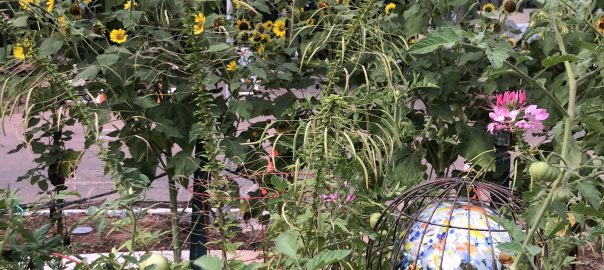







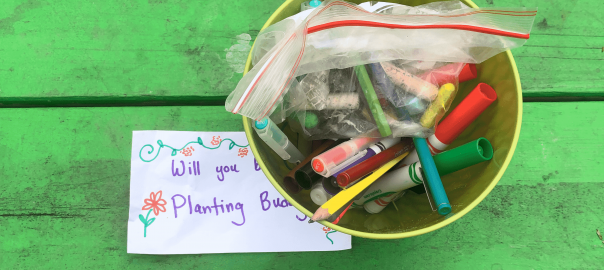

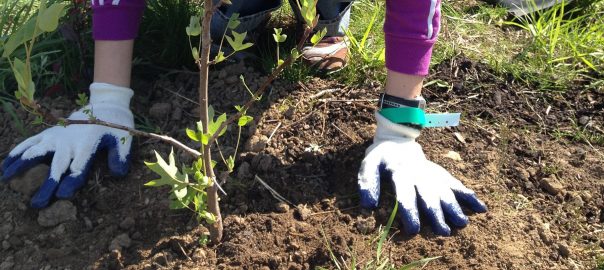
What a heartwarming tribute to Gramps’ garden and the power of landscapes to carry memories and stories. I couldn’t agree more with the author’s call to slow down and listen to the tales our gardens have to tell. One tip I’d like to add is the magic of creating a “memory corner” in your garden. It could be a small section dedicated to planting flowers, trees, or decorations that hold special memories or symbolism for you and your loved ones. It’s a beautiful way to infuse personal stories into your garden’s design and make it even more meaningful. Keep sharing these wonderful stories and nurturing the memories in your landscapes!
What a beautiful essay! Thanks so much.